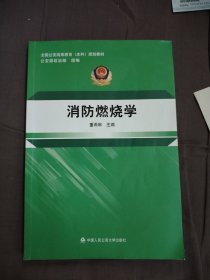
Python数据处理(影印版 英文版)
¥ 15 1.6折 ¥ 96 八品
仅1件
河北廊坊
认证卖家担保交易快速发货售后保障
作者[美]杰奎琳·卡兹奥、凯瑟琳·嘉穆 著
出版社东南大学出版社
出版时间2017-02
版次1
装帧平装
货号A4-2
上书时间2024-11-12
- 在售商品 暂无
- 平均发货时间 8小时
- 好评率 暂无
- 最新上架
商品详情
- 品相描述:八品
- 实物拍摄品相自鉴下单祥看图片
图书标准信息
- 作者 [美]杰奎琳·卡兹奥、凯瑟琳·嘉穆 著
- 出版社 东南大学出版社
- 出版时间 2017-02
- 版次 1
- ISBN 9787564170035
- 定价 96.00元
- 装帧 平装
- 开本 16开
- 纸张 胶版纸
- 页数 488页
- 字数 622千字
- 正文语种 英语
- 【内容简介】
-
《Python数据处理(影印版 英文版)》向非程序员展示了如何处理本质上太杂乱或难以下手的信息。你不需要了解Pvthon编程语言基础知识就可以开始了。
通过循序渐进的练习,你将学习如何有效地获取、清理、分析和呈现数据。你还将了解如何将数据处理自动化,安排文件编辑和清理任务,处理*大的数据集,以及使用所获取的数据讲述引人注目的故事。
快速学习基本的Python语法、数据类型和语言概念使用机器可读和人类可用的数据抓取网站和API以查找大量有用的信息清理和格式化数据以消除数据集里的重复和错误数据了解何时标准化数据以及何时测试和编写脚本进行数据清理使用新的Python库和技术探索并分析数据集使用Python解决方案自动化整个数据处理过程 - 【目录】
-
Preface
1. Introduction to Python
Why Python
Getting Started with Python
Which Python Version
Setting Up Python on Your Machine
Test Driving Python
Install pip
Install a Code Editor
Optional: Install IPython
Summary
2. Python Basics
Basic Data Types
Strings
Integers and Floats
Data Containers
Variables
Lists
Dictionaries
What Can the Various Data Types Do?
String Methods: Things Strings Can Do
Numerical Methods: Things Numbers Can Do
List Methods: Things Lists Can Do
Dictionary Methods: Things Dictionaries Can Do
Helpful Tools: type, dir, and help
type
dir
help
Putting It All Together
What Does It All Mean?
Summary
3. Data Meant to Be Read by Machines
CSV Data
How to Import CSV Data
Saving the Code to a File; Running from Command Line
JSON Data
How to Import ]SON Data
XML Data
How to Import XML Data
Summary
4. Working with Excel Files
Installing Python Packages
Parsing Excel Files
Getting Started with Parsing
Summary
5. PDFs and Problem Solving in Python
Avoid Using PDFs!
Programmatic Approaches to PDF Parsing
Opening and Reading Using slate
Converting PDF to Text
Parsing PDFs Using pdfminer
Learning How to Solve Problems
Exercise: Use Table Extraction, Try a Different Library
Exercise: Clean the Data Manually
Exercise: Try Another Tool
Uncommon File Types
Summary
6. Acquiring and Storing Data
Not All Data Is Created Equal
Fact Checking
Readability, Cleanliness, and Longevity
Where to Find Data
Using a Telephone
US Government Data
Government and Civic Open Data Worldwide
Organization and Non-Government Organization (NGO) Data
Education and University Data
Medical and Scientific Data
Crowdsourced Data and APIs
Case Studies: Example Data Investigation
Ebola Crisis
Train Safety
Football Salaries
Child Labor
Storing Your Data: When, Why, and How?
Databases: A Brief Introduction
Relational Databases: MySQL and PostgreSQL
Non-Relational Databases: NoSQL
Setting Up Your Local Database with Python
When to Use a Simple File
Cloud-Storage and Python
Local Storage and Python
Alternative Data Storage
Summary
7. Data Cleanup: Investigation, Matching, and Formatting
Why Clean Data?
Data Cleanup Basics
Identifying Values for Data Cleanup
Formatting Data
Finding Outliers and Bad Data
Finding Duplicates
Fuzzy Matching
RegEx Matching
What to Do with Duplicate Records
Summary
8. Data Cleanup: Standardizing and Scripting
Normalizing and Standardizing Your Data
Saving Your Data
Determining What Data Cleanup Is Right for Your Project
Scripting Your Cleanup
Testing with New Data
Summary
9. Data Exploration and Analysis
Exploring Your Data
Importing Data
Exploring Table Functions
Joining Numerous Datasets
Identifying Correlations
Identifying Outliers
Creating Groupings
Further Exploration
Analyzing Your Data
Separating and Focusing Your Data
What Is Your Data Saying?
Drawing Conclusions
Documenting Your Conclusions
Summary
10. Presenting Your Data
Avoiding Storytelling Pitfalls
How Will You Tell the Story?
Know Your Audience
Visualizing Your Data
Charts
Time-Related Data
Maps
Interactives
Words
Images, Video, and Illustrations
Presentation Tools
Publishing Your Data
Using Available Sites
Open Source Platforms: Starting a New Site
Jupyter (Formerly Known as IPython Notebooks)
Summary
11. Web Scraping: Acquiring and Storing Data from the Web
What to Scrape and How
Analyzing a Web Page
Inspection: Markup Structure
Network/Timeline: How the Page Loads
Console: Interacting with JavaScript
In-Depth Analysis of a Page
Getting Pages: How to Request on the Internet
Reading a Web Page with Beautiful Soup
Reading a Web Page with LXML
A Case for XPath
Summary
12. Advanced Web Scraping: Screen Scrapers and Spiders
Browser-Based Parsing
Screen Reading with Selenium
Screen Reading with Ghost.Py
Spidering the Web
Building a Spider with Scrapy
Crawling Whole Websites with Scrapy
Networks: How the Internet Works and Why It's Breaking Your Script
The Changing Web (or Why Your Script Broke)
A (Few) Word(s) of Caution
Summary
13. APIs
API Features
REST Versus Streaming APIs
Rate Limits
Tiered Data Volumes
API Keys and Tokens
A Simple Data Pull from Twitter's REST API
Advanced Data Collection from Twitter's REST API
Advanced Data Collection from Twitter's Streaming API
Summary
14. Automation and Scaling
Why Automate?
Steps to Automate
What Could Go Wrong?
Where to Automate
Special Tools for Automation
Using Local Files, argv, and Config Files
Using the Cloud for Data Processing
Using Parallel Processing
Using Distributed Processing
Simple Automation
CronJobs
Web Interfaces
Jupyter Notebooks
Large-Scale Automation
Celery: Queue-Based Automation
Ansible: Operations Automation
Monitoring Your Automation
Python Logging
Adding Automated Messaging
Uploading and Other Reporting
Logging and Monitoring as a Service
No System Is Foolproof
Summary
15. Conclusion
Duties of a Data Wrangler
Beyond Data Wrangling
Become a Better Data Analyst
Become a Better Developer
Become a Better Visual Storyteller
Become a Better Systems Architect
Where Do You Go from Here?
A. Comparison of Languages Mentioned
B. Python Resources for Beginners
C. Learning the Command Line
D. Advanced Python Setup
E. Python Gotchas
F. IPython Hints
G. Using Amazon Web Services
Index
点击展开
点击收起
相关推荐
— 没有更多了 —





























以下为对购买帮助不大的评价